Types of Pool Finishes (Design Guide)
Here’s our guide to the types of pool finishes including plaster, tile, exposed aggregate, stone and concrete.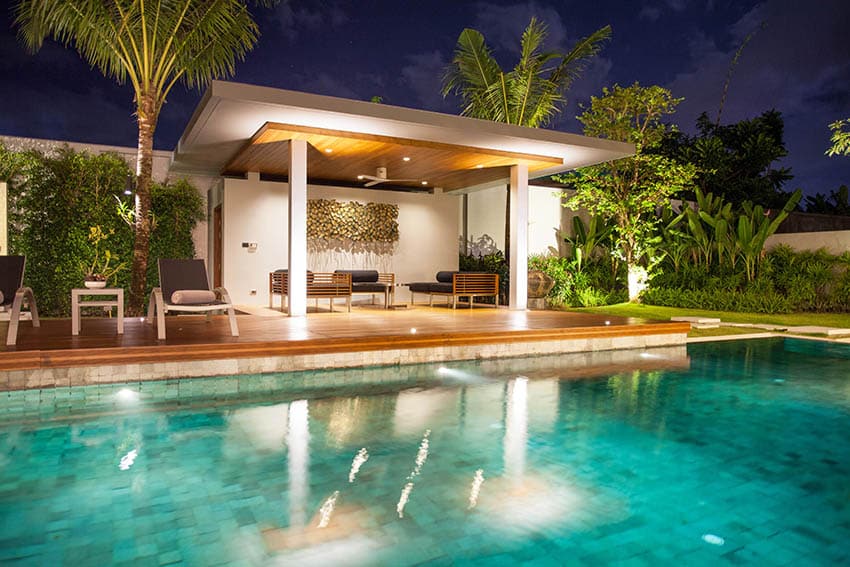
It is crucial to understand that a swimming pool lasts for much longer than expected – and all this while, it is subjective to ample traffic, chlorine, water, and general wear and tears.
Thus, wisely picking the finishes that offer extravagant aesthetics along with utmost longevity and durability is the important.
What Are the Different Types of Pool Finishes?
There is a wide array of pool material and finish opportunities available in the market. Choosing pool finishes will not only eliminate water leakage but also offer longevity and a seamless, flabbergasting appearance of the pool.
Truly, these finishes are what define the mood and aesthetics of your outdoor space. So, let’s discuss the major types of finishes available along with their properties, pros, and cons.
Plaster Pool Finish
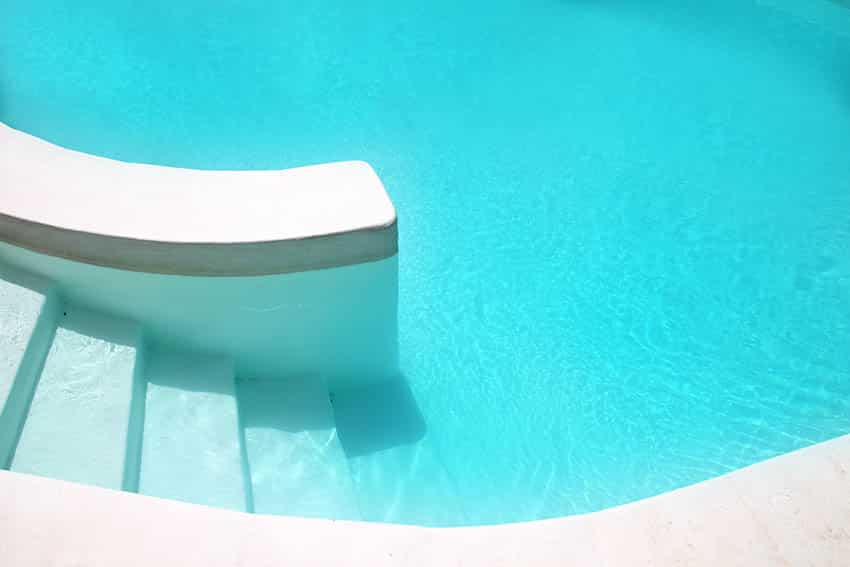
Being one of the most affordable and cheapest finishes available in the market, a plaster pool finish requires a lot of maintenance and has a short shelf life of about 7 to 10 years. As the finish ages etching and chipping can be very well observed.
A plaster finish can further be subcategorized into two types: standard and colored.
White Plaster
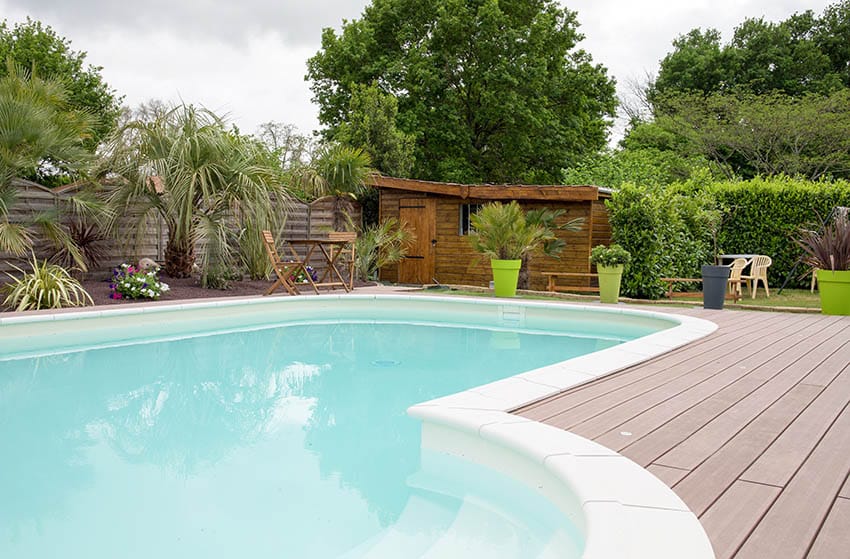
So, if you are looking to attain a natural look with truly the color of the water reflecting, this could most likely be your preference. Moreover, this option is comparatively cheaper and even lesser to maintain.
Dark Shades of Plaster
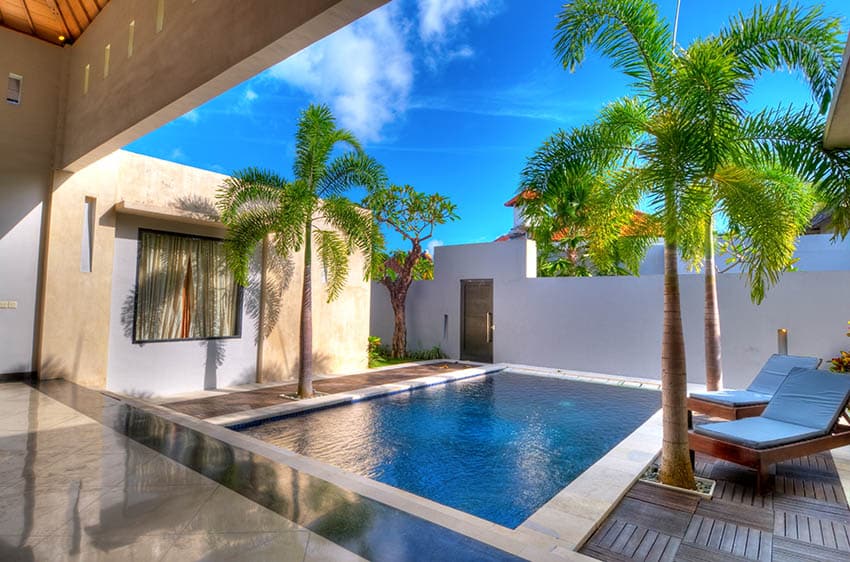
These pigmented pools definitely exhibit a dramatic appearance which gives these pools an eye-catchy effect. Some of these darker shades also tend to add depth to the existing pool perspective.
Color
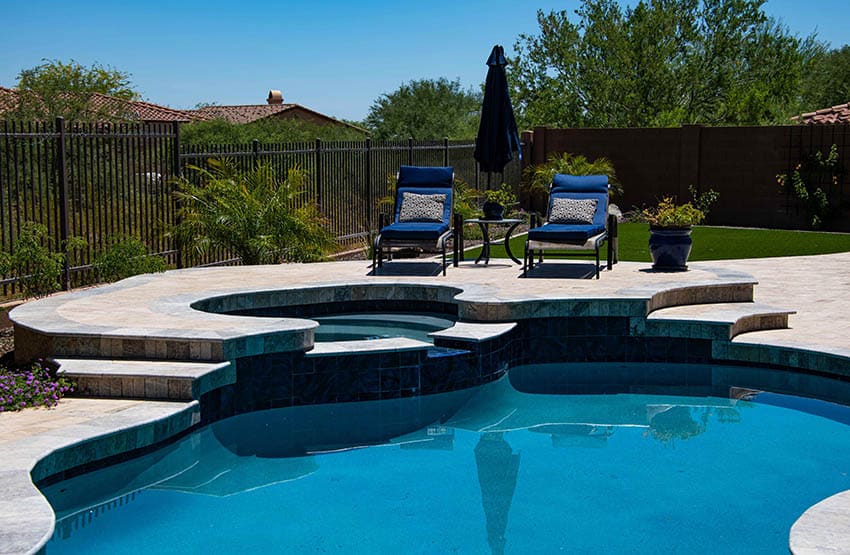
The most popular pool finish color is medium gray. This shade gives the pool’s water a beautiful blue shade that is appealing to homeowners.
To add reflective qualities to the pool, darker colors can be used such as black or darker grays. Light color plaster can actually create a greener color pool and darker plaster shades offer more blue variations. See more pictures of lagoon swimming pool designs here.
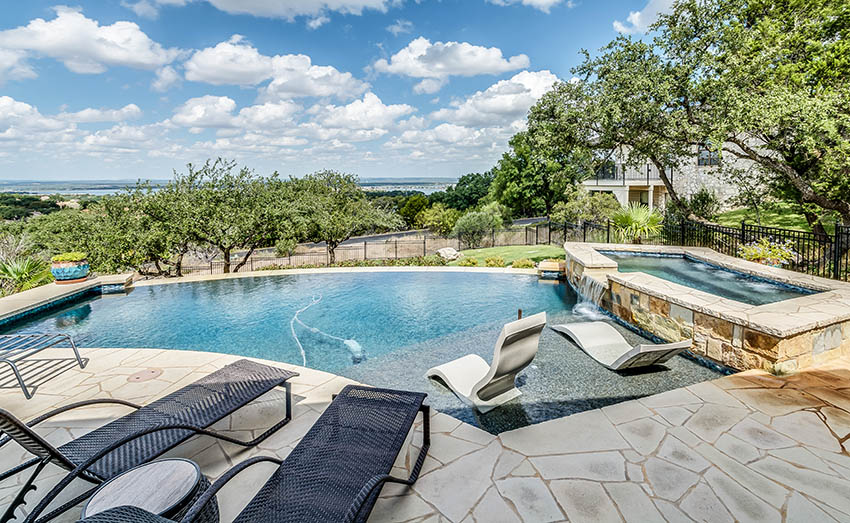
Hence, upgrading the traditional plaster pool surfaces, the aggregate finishes are definitely becoming one of the most popular finishes. They are generally low maintenance and offer extreme longevity when regularly taken care of. However, they can be expensive and might need resurfacing every 10 to 20 years as required.
So, there are two main types of pool aggregate finishes – exposed and polished. Let’s discuss what both of them have to offer.
Exposed Aggregate Pool Finish

The outcome is a pure rough texture that may feel rugged when walking on the surface. Hence, depending on your requirements – this may or may not be a blessing for you.
Regardless of the discomfort, this finish definitely exhibits a natural and organic appearance to the pool. It also creates a better slip resistance that is sought after for pool areas.
When talking about durability and strength, this option proves to be better than plain plaster and somehow lesser than polished aggregates. Read more about exposed aggregate pool decks here.
Polished Aggregate Pool Finish

Once this mixture is applied with hands on the surface of the pool, the resultant is further polished to create a smooth and shiny pool surface.
The gems in this mixture blend are not only aesthetically appealing but also help retain the material and extend the life span of the finish. Applying this decorative finish will ensure the extension of material life by 12 to 20 years.
Pebble Finish

Tile Pool Finishes

As compared to plaster and aggregate finish, the tiles take a much longer installation process and time. Hence, just in case if there is any damage or generally if a tile needs replacement, the apparent work can be carried out quickly.
Depending on the size and type of your tile, the cost may vary around $50 per square foot. However, you must take care of these tiles and maintain them regularly as they might end up getting chipped and damaged over the course of years.
Moreover, these tiles come in a variety of sizes – mainly, ranging from 1-, 2-, 3-, or 6-inches squares that allow creating striking mosaics on the surface of the pool. Adding on to this, the tiles have the potential to create unique pieces that lasts much longer than expected.
On the other hand, some of the disadvantages include the expensive price, difficult installation process, and utmost prone to calcium buildup on the surface. Let’s discuss the three major types of tiles available in the market are Ceramic, porcelain, and stone tiles.
Ceramic & Porcelain Pool Tile
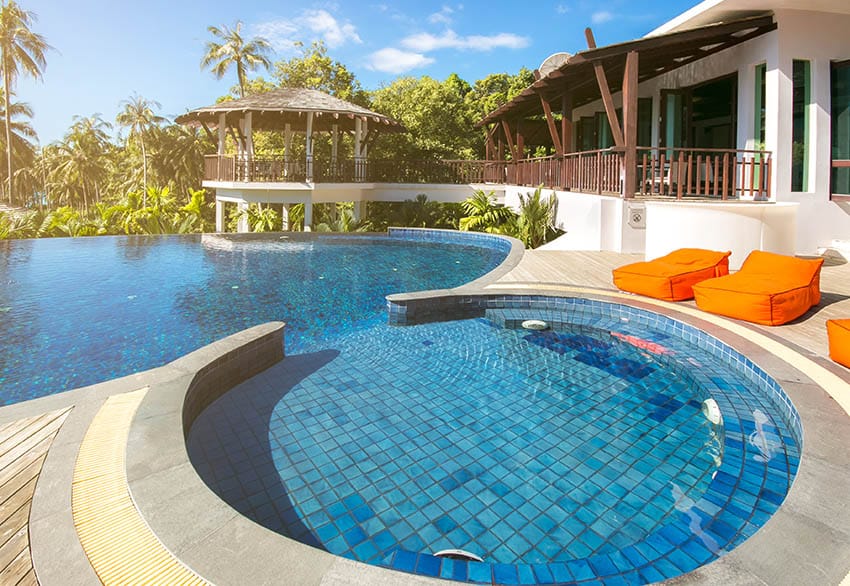
The durable and high-quality appearance reflects a perfect tinge of drama and depth in your outdoor spaces. You can further choose the textured finish for an anti-slip grip.
Tiles come in a wide array of sizes, shapes, colors, as well as styles. The tiles help in reflecting away the light from the pool creating a dynamic appearance while also adding a layer of waterproof protection.
On the other hand, unglazed tiles create a natural and organic look seamlessly blending with the nearby landscape.
Stone Tile

Just like marble, granite, slate, and limestone, these natural-looking tiles help blend the pool with the nearby surroundings. Especially if you have a modern, minimalist, and a contemporary outdoor design style, this finish is cherry on the top.
This finish is generally comprised of blending regularly-sized pebbles with smaller pieces of pebbles. As compared to ceramic and porcelain tiles, these have a rough texture and feel.
So, if you are trying to achieve a natural and abstract look, this stone tile may be the best option for your pool. Available colors are shades of blue, green, and gray (could be more depending upon the provider and manufacturer).
What is the Longest Lasting Pool Finish?
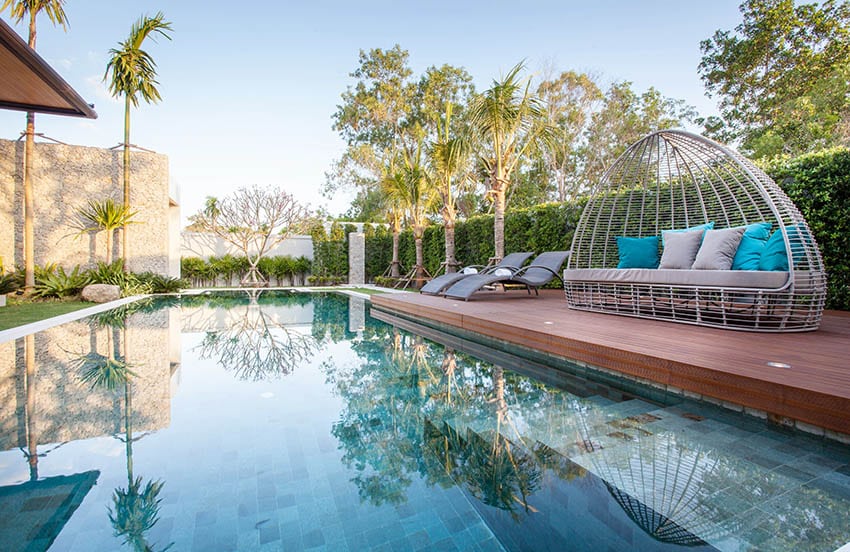
Generally, tiles don’t require much maintenance and you can simply use them for years and years. Hence, they don’t require replacement. Although they are expensive in the initial stages, but if observed in the long run, they save you money and time, both.
What is the Best Pool Resurfacing Material?
If your swimming pool shows signs of wear, tear, and abrasiveness, it is time to consider resurfacing of the pool. There are three popular materials that are used to resurface swimming pools – pebble, concrete, and plaster. Let’s discuss what each of them has to offer.
Pebble
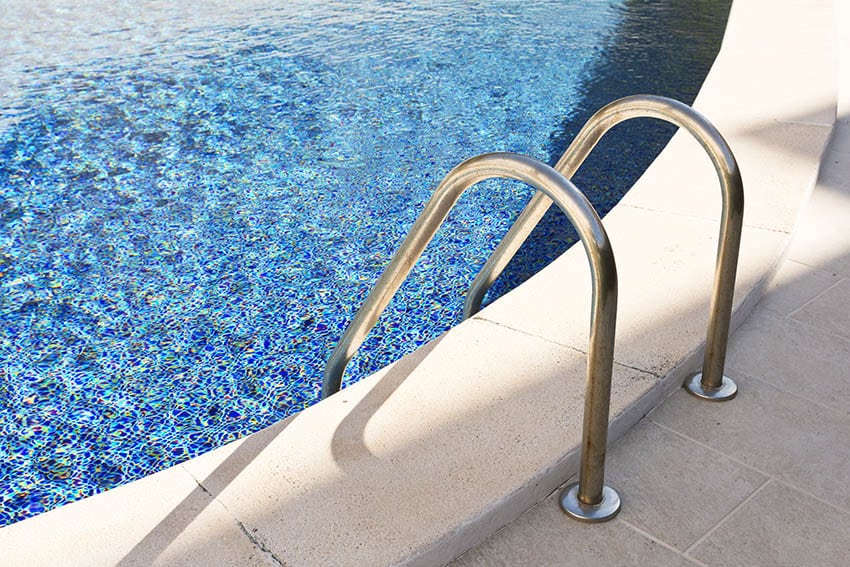
Plaster
One of the most popular and cheap, white plaster can be used to easily resurface the pool. However, they are not as strong as the others – mainly, get easily chipped away and require constant maintenance and resurfacing over a course of the period.
Concrete
Offering advantages such as aesthetics, durability, strength, and longevity, concrete is probably one of the best materials for resurfacing a pool. It is easier to fix cracks in this case while applying almost any and every color to it.
What is the Best Surface for a Swimming Pool?
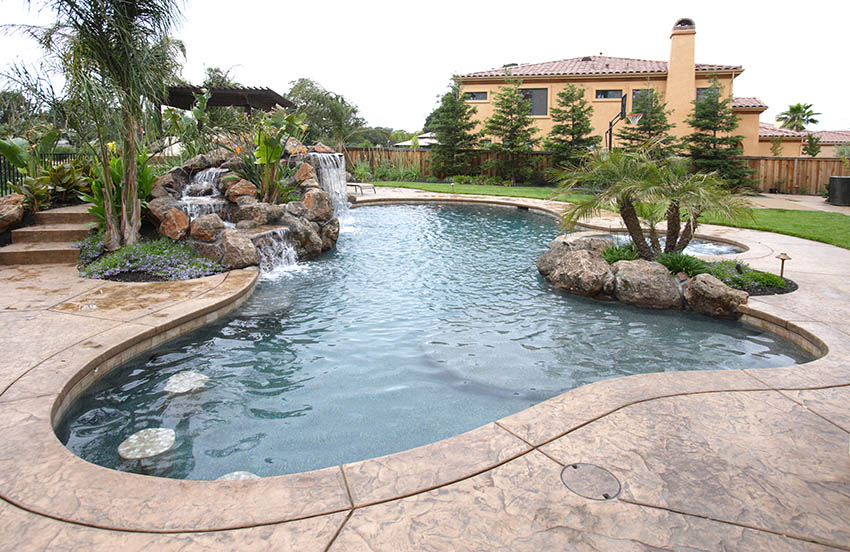
You can incorporate this in high traffic areas with almost very minimum maintenance. Hence, making the best option for surfacing and resurfacing.
To see many of these finishes and options you can use one of the available swimming pool design software programs. These programs allow one to create their own pool layout and try out different colors and finishes to see which type you like best.

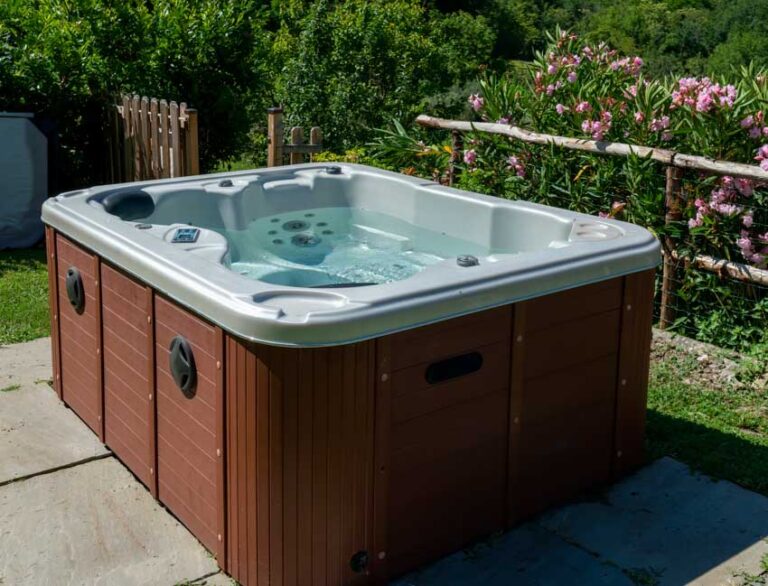
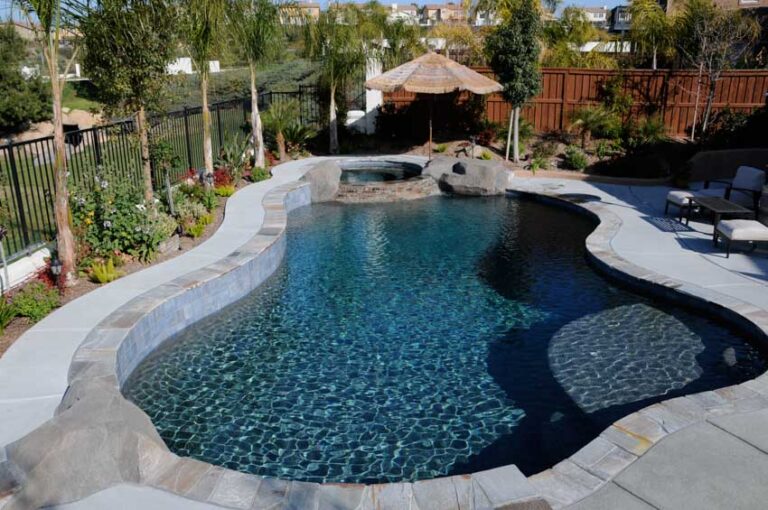
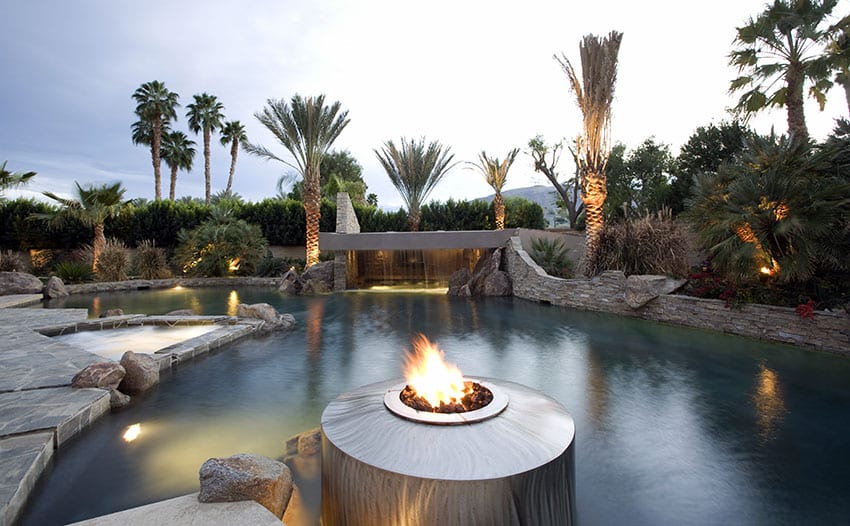
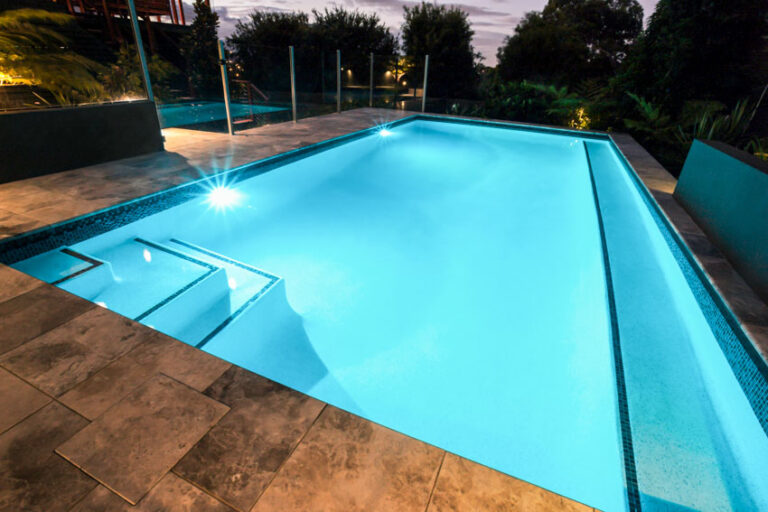
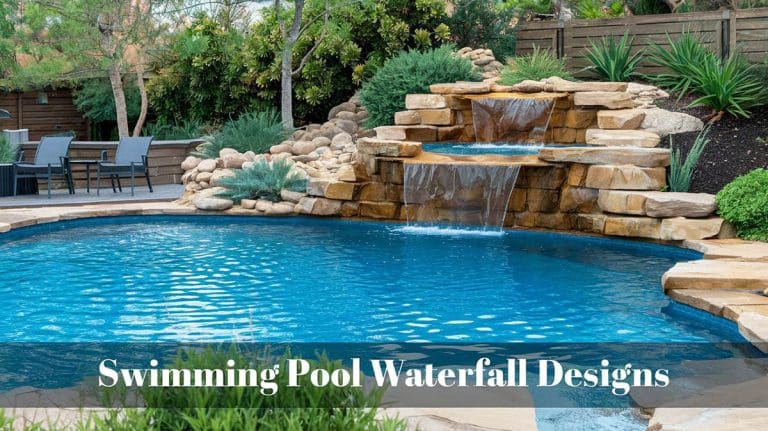

I live in south florida and am looking to add a pool to my home. What is the best color pool finish for hot and humid climates like we have here?
It depends on your personal taste. Medium grey is a good choice to get the look of beautiful sparkling water. A black pool may raise the heat level of your pool which may be a detriment in the hot summers of Florida.
I would love one of those lagoon bottom pools that looks like your in a tropical jungle. Then add some lush palm trees and gardens around the patio to make my own tropical oasis.